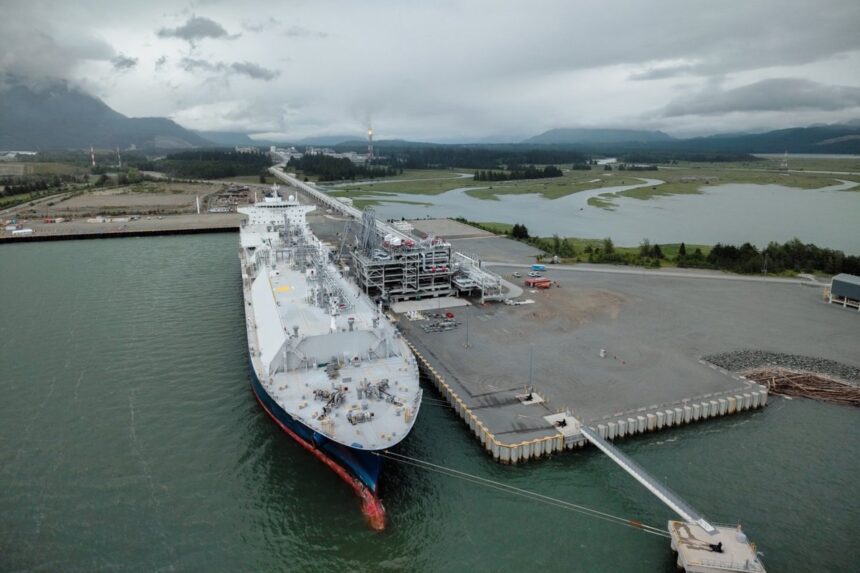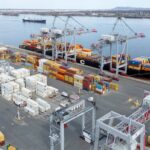In a watershed moment for Canadian energy exports, the inaugural shipment of liquefied natural gas from the massive LNG Canada facility in Kitimat, British Columbia, departed for Asian markets this week. This historic milestone, representing years of development and over $40 billion in investment, signals Canada’s formal entry into the global LNG market as a major supplier.
The massive carrier vessel, loaded with cooled natural gas transformed into liquid form, slipped away from the northern B.C. coast terminal amid celebrations from project stakeholders and government officials. This first cargo is destined for Asian markets, where demand for cleaner-burning transition fuels continues to grow amid efforts to reduce coal dependency.
“This represents a transformative moment for Canada’s energy sector,” said Jason Kearns, energy economist at the University of Calgary. “After years of planning and construction, Canada has finally joined major global LNG exporters like Australia, Qatar, and the United States in supplying Asian markets with natural gas.”
The LNG Canada project, a joint venture led by Shell with partners including Petronas, PetroChina, Mitsubishi, and Korea Gas, has faced numerous challenges since its 2018 final investment decision. Indigenous reconciliation efforts, environmental concerns, and pandemic-related construction delays all threatened to derail the massive undertaking at various points.
Provincial officials were quick to highlight the economic benefits. The project created over 10,000 construction jobs and is expected to support approximately 400-450 permanent operational positions. Annual tax revenues from the facility are projected to reach hundreds of millions of dollars for various levels of government.
“This project demonstrates that with proper consultation and environmental safeguards, Canada can develop its natural resources responsibly while creating significant economic opportunities,” said B.C. Premier David Eby during the ceremonial departure of the first shipment.
Environmental groups, however, have continued to raise concerns about the project’s greenhouse gas emissions and its compatibility with Canada’s climate commitments. While natural gas produces significantly fewer emissions than coal when burned, the extraction and processing of gas releases methane, a potent greenhouse gas.
“The emissions from this facility alone will make it nearly impossible for British Columbia to meet its climate targets,” said Claire Thompson of Climate Action Network. “We need to be transitioning away from fossil fuels altogether, not building new export infrastructure with decades-long operational lifespans.”
Industry analysts note that the timing of Canada’s entry into the global LNG market comes as competition intensifies. Qatar and the United States have dramatically expanded their export capacities in recent years, while demand growth in key Asian markets like China has slowed compared to earlier projections.
Nevertheless, long-term supply contracts underpin the LNG Canada project, providing some insulation from market volatility. Japan and South Korea, two of the world’s largest LNG importers, remain committed to natural gas as a transition fuel as they work to reduce their coal dependency.
For Canada, which has long sought to diversify its energy exports beyond the United States, the shipment represents the culmination of a strategic shift years in the making. The country possesses vast natural gas reserves but has historically lacked the infrastructure to reach overseas markets.
“This first cargo is symbolic of Canada’s changing role in global energy markets,” noted Samantha Reynolds, director at the Canadian Energy Research Institute. “It’s not just about the volumes being exported, but about establishing new trade relationships and positioning Canadian resources in key growth markets.”
As Canada navigates the complex balance between energy development and climate commitments, the success of the LNG Canada project will likely influence decisions on other proposed export facilities along British Columbia’s coast. For now, industry participants are celebrating this milestone while keeping a watchful eye on evolving market conditions and regulatory requirements.
The question remains: Will Canada’s belated entry into the global LNG market prove to be well-timed strategic diversification, or has the window of opportunity narrowed as the world accelerates its transition to renewable energy sources?











